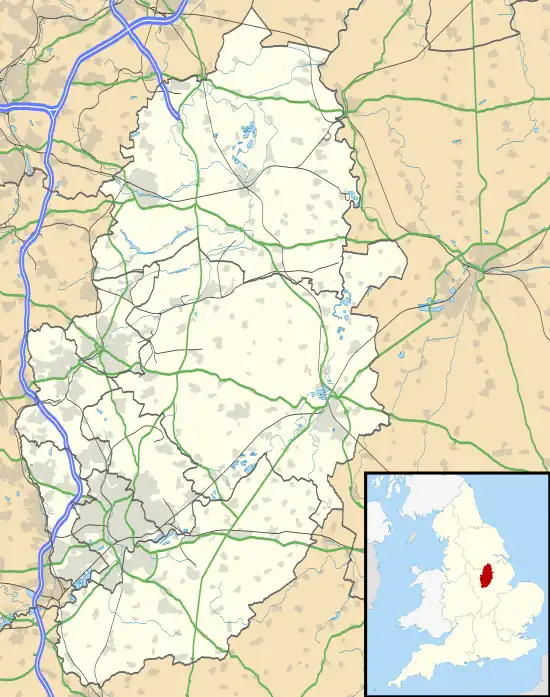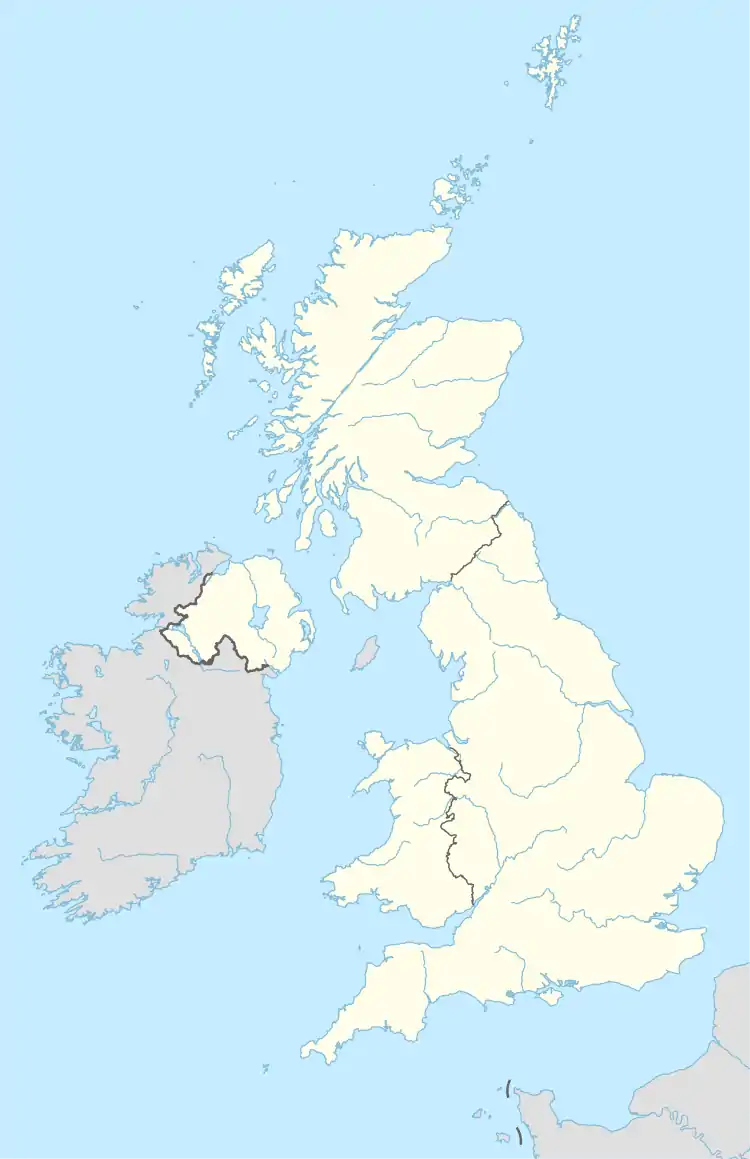RAF Worksop
Royal Air Force Worksop, or more simply RAF Worksop, is a former Royal Air Force satellite station located at Scofton, 2.8 miles (4.5 km) north east of Worksop, Nottinghamshire and 4.7 miles (7.6 km) west of Retford, Nottinghamshire, England.
| RAF Worksop RAF Scofton[1] | |||||||||||
|---|---|---|---|---|---|---|---|---|---|---|---|
| Scofton, Nottinghamshire in England | |||||||||||
 RAF Worksop Shown within Nottinghamshire  RAF Worksop RAF Worksop (the United Kingdom) | |||||||||||
| Coordinates | 53°19′28″N 001°03′37″W | ||||||||||
| Type | Satellite station | ||||||||||
| Code | WP[2] | ||||||||||
| Site information | |||||||||||
| Owner | Air Ministry | ||||||||||
| Operator | Royal Air Force | ||||||||||
| Controlled by | RAF Bomber Command * No. 91 (OTU) Group RAF | ||||||||||
| Site history | |||||||||||
| Built | 1920 and 1940 | ||||||||||
| Built by | Wimpey & Carmichael | ||||||||||
| In use | November 1943-1948 1952- December 1960 | ||||||||||
| Battles/wars | European theatre of World War II | ||||||||||
| Airfield information | |||||||||||
| Elevation | 44 metres (144 ft)[2] AMSL | ||||||||||
| |||||||||||
Station history
- No. 18 Operational Training Unit RAF between September 1943 and December 1944 with various aircraft including Miles Martinets, Airspeed Oxfords, Curtiss P-40 Curtiss Tomahawks and Vickers Wellingtons[3]
- No 1 Engine Control and Demonstration Unit RAF between February 1945 and January 1946[4]
- No 1 Group Communication Flight RAF between December 1945 and January 1946[5]
- No. 4 Flying Training School RAF between June 1956 and June 1958[6]
- No. 211 Advanced Flying School RAF between August 1952 and June 1954[7] became No. 211 Flying Training School RAF between June 1954 and June 1956[8]
- No. 616 Squadron RAF from 23 May 1955 with the Gloster Meteor F.8 before being disbanded on 10 March 1957[9]
- Bomber Command Central Night Vision School RAF between December 1945 and March 1946[10]
- RAF Central Vision Training School RAF between March 1946 and June 1948[11]
- Transport Command Central Vision Training School RAF between November 1946 and May 1958[12]
Current use
The site is currently used for farming with few remaining signs of the former airfield.[13]
References
- Citations
- "Worksop". Airfields of Britain Conservation Trust. Retrieved 11 November 2012.
- Falconer 2012, p. 219.
- Sturtivant & Hamlin 2007, p. 201.
- Sturtivant & Hamlin 2007, p. 108.
- Sturtivant & Hamlin 2007, p. 155.
- Sturtivant & Hamlin 2007, p. 136.
- Sturtivant & Hamlin 2007, p. 33.
- Sturtivant & Hamlin 2007, p. 138.
- Jefford 1988, p. 84.
- Sturtivant & Hamlin 2007, p. 79.
- Sturtivant & Hamlin 2007, p. 227.
- Sturtivant & Hamlin 2007, p. 281.
- "Forgotten airfields europe". www.forgottenairfields.com. Retrieved 19 February 2021.
- Bibliography
- Falconer, J. (2012). RAF Airfields of World War 2. UK: Ian Allan Publishing. ISBN 978-1-85780-349-5.
- Jefford, C. G. (1988). RAF Squadrons. A comprehensive record of the movement and equipment of all RAF squadrons and their antecedents since 1912. Shrewsbury: Airlife. ISBN 1-85310-053-6.
- Sturtivant, R.; Hamlin, J. (2007). Royal Air Force flying training and support units since 1912. UK: Air-Britain (Historians). ISBN 978-0851-3036-59.
This article is issued from Wikipedia. The text is licensed under Creative Commons - Attribution - Sharealike. Additional terms may apply for the media files.